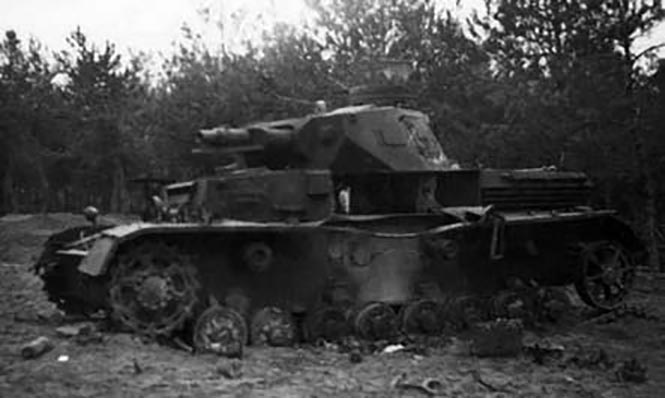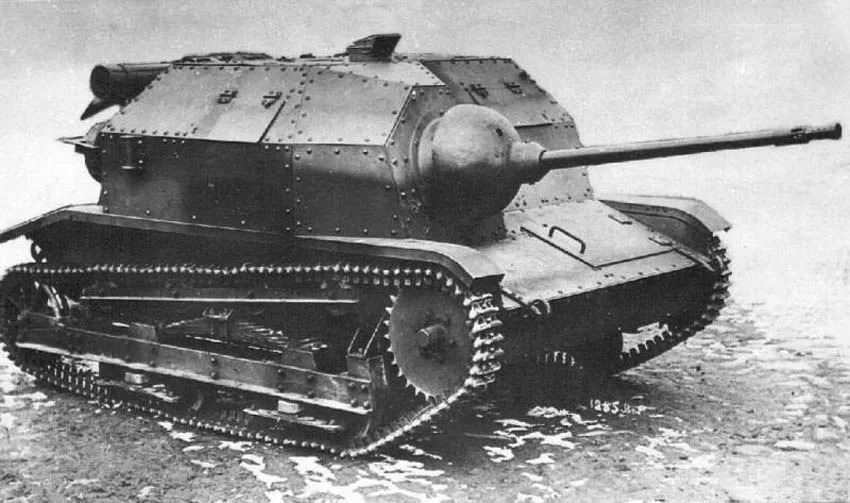Orlik, the Pole who destroyed ten German tanks using a tiny tankette
The idea that many have of the German invasion of Poland in 1939 consists of Polish horsemen making cavalry charges against German tanks.
As we have already seen here, those cavalry charges were a myth propagated by the Germans, but one that many Poles ended up assuming because they thought it was a truly romantic and courageous scene. The German invasion was not as fast a military walk as some think and in it there were armored clashes between the Germans and the Poles, although the numerical and technical superiority of the German tanks ended up tipping the balance in favor of the invaders.

In 1939, the Polish armored forces consisted of a wide variety of vehicles, mostly light tanks such as the 7TP (Poland had 149 at the time of the German invasion) and reconnaissance tanks. The most numerous of these tanks was the TK-3 and its TKS variant, with a total of 574 units (300 TK-3 and 274 TKS). The TK-3 was a reconnaissance tankette based on the British Carden Loyd tankette of 1927. The TK-3 and TKS were armed with a 7.92mm wz.25 machine gun. Between 23 and 25 TKS were armed with 20 mm cannons, which would be very effective during the invasion, although their number was very insufficient. Two other TKS were armed with 37 mm Bofors cannons, but they were in the experimental phase when the invasion began.

One of the commanders of the TKS with a 20 mm cannon was cadet Edmund Roman Orlik. In September 1939 he was attached to the 71st Armored Squadron, led by Kazimierz Konrad Żółkiewicz and attached to the 1st Armored Battalion. During the Polish mobilization against the invasion, the 71st Squadron was assigned to the Wielkopolska Cavalry Brigade, based in Poznań. On September 18, 1939, Orlik's unit was participating in the Battle of Pociecha, specifically in the Kampinos Forest, when it came across a column of German PzKpfw 35(t) tanks (German designation of Czechoslovakian LT vz.35 tanks, which were captured during the German invasion of Czechoslovakia in 1938) led by a Panzer IV B. The column was headed by Wiktor IV Albrecht von Ratibor, a Prussian nobleman.

Taking advantage of the great mobility of the TKS (it could reach a speed of 46 km/h), its low profile (which allowed it to hide easily among the trees of the Kampinos Forest) and the power of fire from his 20mm cannon, Orlik ambushed the Germans, destroying three of their tanks. During the ambush, the commander of the German column was killed.
The next day, Orlik's platoon managed to destroy or damage another 7 tanks in Sieraków, in a fight in which Polish forces, supported by artillery fire, managed to push back a tank regiment and a German armored battalion. Orlik became the first Polish tank ace with 10 German tanks destroyed (13 according to some sources), for which a few days later he was awarded the Cross of Valor. During the fighting in Warsaw, Orlik led one of the only two armored vehicles that participated in the defense of the city.

The TKS tanks were so elusive and annoying to the Germans that they were nicknamed "Kakerlaken" (cockroaches), a prop that Polish tankers humorously and proudly assumed, for which they became affectionately known in Poland these tankettes by the name "Karaluch", the Polish word to refer to that insect. The use of those tanks is still, to this day, a demonstration that a small and fast vehicle can do a lot of damage to slower and better armored vehicles, which is one of the principles of current tanks. reconnaissance combat vehicles.

After the Polish defeat, Orlik did not give up and continued his fight in the ranks of the resistance against the Germans, forming part of Armia Krajowa (National Army), being forced to move to Poznań, Krakow, Lviv and finally the environs of Warsaw, constantly hunted by the Germans. After the war he returned to civilian life, graduating in Fine Arts and Architecture. He died in an accident on April 8, 1982. As a curiosity, today in the game World of Tanks an "Orlik Medal" is awarded to the player who manages to destroy three or more enemy tanks with a tank.
The channel Yarnhub has published an excellent video recreating that fight in the Forest of Campinos, which brought Edmund Roman Orlik to fame:
---
Main image: Yarnhub.
|
Don't miss the news and content that interest you. Receive the free daily newsletter in your email: |
- Most read
- The 'hole' without civil flights around Paris during the opening of the Olympic Games
- Stunning footage of the F-15QA Ababil in flight recorded from its cockpit
- The firearms used by the Pontifical Swiss Guard, the smallest army in the world
- Eurofighter vs F-35: the opinions of professional pilots on these advanced fighters
- The first photo of an F-16 fighter with Ukrainian insignia and the details it has revealed
- The most distant deployment of the Spanish Air Force in Australia and New Zealand
- This is the driver station of an M1 Abrams tank and the impressive start of its engine

 ES
ES







Opina sobre esta entrada: